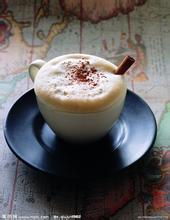Nicaraguan coffee flavor taste manor characteristics of boutique Coffee Joy Manor introduction
Since July 1927, Augusto. Cesar. Sandino led the people in a guerrilla war against the US occupation, forcing the US military to withdraw in 1933. On February 21, 1934, the Commander of the Nicaraguan National Guard, Anastacio. Somocha. Garcia assassinated Sandino at the behest of US President Roosevelt. He became president in 1936 and established a pro-American "Cordillo" dictatorship for more than 40 years until 1979. In 1964, the Sandinista National Liberation Front (SPLF) was established to carry out a revolutionary struggle against the Somocha dictatorship. Managua, the capital of Nicaragua, is located in the west of the border, located on the south bank of Lake Managua, hence its name. The northwest is 140 kilometers away from the Collinto seaport on the Pacific coast. 55 meters above sea level. It is a Spanish city with beautiful scenery. Because it is located on the east side of the Pacific volcanic active seismic belt, there have been four strong earthquakes in the city in the past 100 years, one of which caused the worst damage to the city in December 1972. The rebuilt Managua has taken many important measures in reducing population density, moving large enterprises to other places and improving the earthquake-proof capacity of buildings. The word Managua comes from the Indian Naval language, and its meaning has two interpretations, one is "Mexican place", and the other is "waterside". About 10,000 years ago, there were human activities on the shores of Lake Managua, and the remains of ancient human activities can be seen from the Acorink site. As a result of natural disasters such as earthquakes, residents have moved many times. When the Spaniards conquered Nicaragua in the early 16th century, it was still an important Indian village. It became a city in 1846. It was designated as the capital of the Republic in 1852. From then on, it became the political center of the country.
The suitable climate provides an excellent growth environment for the cultivation of coffee. The mineral-rich pozzolanic soil provides abundant nutrients for the cultivation of coffee trees. High-quality Nicaraguan coffee is also grown in the northern and central highlands of the country. The best coffee is produced in Matagalpa. The coffee produced here is highly respected by coffee lovers all over the world and gradually valued by the boutique community. Abundant precipitation, suitable temperature, high altitude, fertile soil, and unique planting ecology are the prerequisites for creating high-quality Nicaraguan coffee. Nicaragua has a low flavor, chocolate, caramel sweetness, obvious almond flavor and bright sour taste, which is different from the rising tone of bright fruit acid in Central America. Nicaragua's coffee planting ecology has a unique environment, covered with fertile volcanic soil, coupled with shade planting methods, established a good growth physique, so that Nicaraguan beans not only have a rich mellow, but also have a delicate flavor, in the eyes of international coffee experts, it is regarded as top grade, and gradually attracted the attention of the boutique industry. Madriz is an ecological coffee with a very hard shell, in a pure natural planting environment. Use more complex tasks to maintain the delicate aroma and taste of the coffee High-quality alpine beans grown between Matagalpa and Jinotega in northern Nicaragua with an average annual rainfall of 1500-1700mm and temperatures between 20-29 degrees Celsius. All of them choose coffee manually, and the cost of labor and time alone is much higher than that of ordinary beans.

Important Notice :
前街咖啡 FrontStreet Coffee has moved to new addredd:
FrontStreet Coffee Address: 315,Donghua East Road,GuangZhou
Tel:020 38364473
- Prev

Introduction to the characteristics of coffee flavor and taste production area of pure taste in Atlanta Manor, Jamaica
Columbus came to Jamaica in 1494, and in 1509 Spain declared Jamaica its colony and renamed it Santiago. Spain's slave policy towards the indigenous peoples led to the extinction of the Arawaks on the island as a result of war, disease and enslavement. In order to replenish the labor force, Spain began to sell slaves from Africa to Jamaica since 1517, causing blacks to gradually become teeth.
- Next

Introduction to the flavor and taste characteristics of chocolate-flavored coffee from Nicaragua Los Congo Manor
Columbus arrived here in 1502 and reached the east coast of Nicaragua. In 1522, Spanish colonists began to conquer the region. The cities of Granada and Leon were founded in 1524. From then on, Nicaragua became a Spanish colony and came under the jurisdiction of the Governor's Office of Guatemala. The city of Leon developed into a political and cultural center; Granada became a commercial and agricultural center. In the later period of colonial rule
Related
- Does Rose Summer choose Blue, Green or Red? Detailed explanation of Rose Summer Coffee plots and Classification in Panamanian Jade Manor
- What is the difference between the origin, producing area, processing plant, cooperative and manor of coffee beans?
- How fine does the espresso powder fit? how to grind the espresso?
- Sca coffee roasting degree color card coffee roasting degree 8 roasting color values what do you mean?
- The practice of lattes: how to make lattes at home
- Introduction to Indonesian Fine Coffee beans-- Java Coffee producing area of Indonesian Arabica Coffee
- How much will the flavor of light and medium roasted rose summer be expressed? What baking level is rose summer suitable for?
- Introduction to the characteristics of washing, sun-drying or wet-planing coffee commonly used in Mantenin, Indonesia
- Price characteristics of Arabica Coffee Bean Starbucks introduction to Manning Coffee Bean Taste producing area Variety Manor
- What is the authentic Yega flavor? What are the flavor characteristics of the really excellent Yejasuffi coffee beans?

